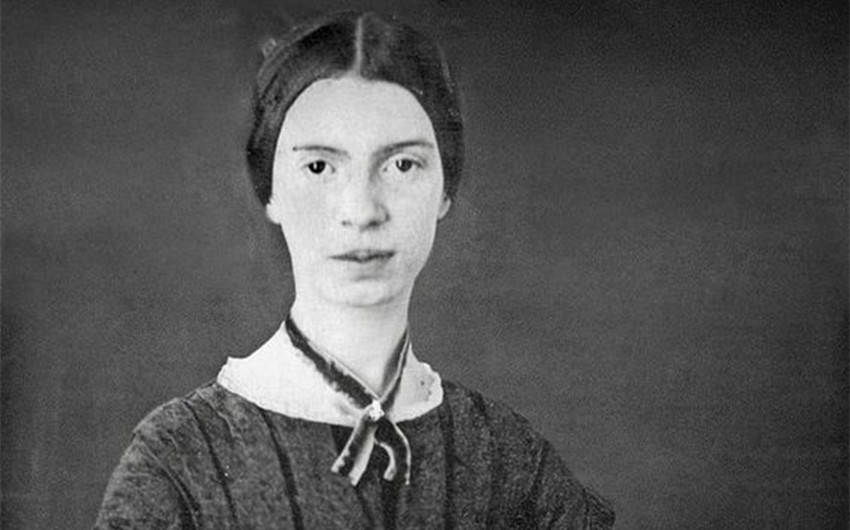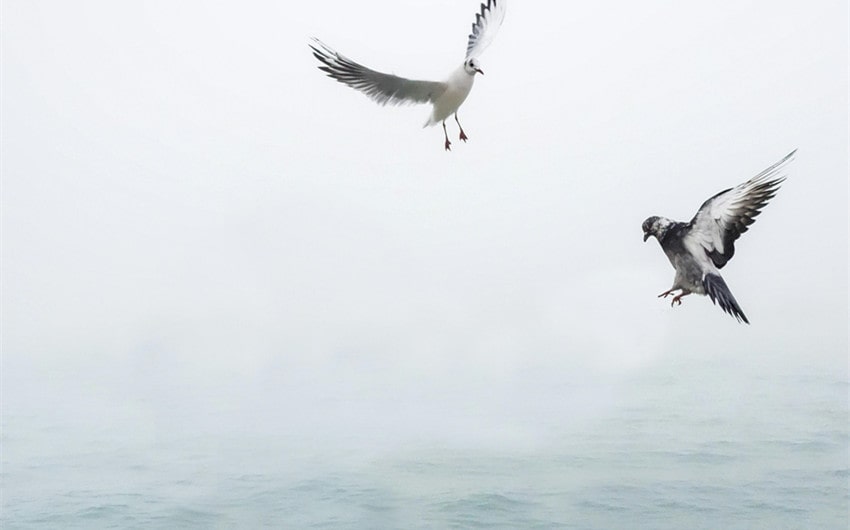Exploring Hope is the Thing with Feathers Meaning in Depth
Emily Dickinson’s famous line, “Hope is the thing with feathers,” captures the enduring power of hope in our lives. But what exactly is the “Hope is the thing with feathers” meaning? Through the metaphor of a bird, Dickinson beautifully expresses how hope can uplift us, even during life’s most challenging storms.
In this article, we’ll explore the deeper meaning behind this poetic line and how it resonates with the human experience, offering comfort and inspiration when we need it most.
Background on Emily Dickinson

Image source: Pinterest
Emily Dickinson (1830-1886) is widely regarded as one of America’s greatest poets, known for her unique and introspective writing style that set her apart from her contemporaries. Born in Amherst, Massachusetts, Dickinson lived most of her life in seclusion, which greatly influenced both her personality and her poetry. Despite her reclusive lifestyle, she produced an extraordinary body of work, comprising nearly 1,800 poems, many of which were not published until after her death.
Dickinson’s Writing Style
Emily Dickinson’s poetry is characterized by her unconventional use of form and language. She often employed short lines, dashes, irregular punctuation, and slant rhyme (partial rhymes that are not exact). These stylistic choices gave her work a distinctive rhythm and ambiguity, encouraging readers to interpret her poems in different ways. Her poems frequently explore themes like death, nature, immortality, love, and the inner workings of the human soul, often presenting profound philosophical reflections.
Dickinson’s ability to convey deep emotions in just a few lines made her a powerful voice in American literature. She had a remarkable way of making complex, universal themes feel deeply personal, and her poems continue to resonate with readers for their emotional honesty and insight.
Overview of the Poem

Emily Dickinson’s poem “Hope is the Thing with Feathers” is one of her most well-known and widely loved works. First published in 1891, the poem is only three short stanzas, yet it carries profound meaning about the resilience of hope. Using the metaphor of a bird, Dickinson beautifully captures the essence of hope as an enduring and comforting force in the face of life’s difficulties.
Hope is the thing with feathers
That perches in the soul,
And sings the tune without the words,
And never stops at all,And sweetest in the gale is heard;
And sore must be the storm
That could abash the little bird
That kept so many warm.I’ve heard it in the chillest land,
And on the strangest sea;
Yet, never, in extremity,
It asked a crumb of me.
Summary of the Poem
The poem begins with the famous line, “Hope is the thing with feathers / That perches in the soul,” introducing the metaphor of hope as a bird that lives within us. This bird is always present, singing without stopping, and offers comfort without asking for anything in return. The second stanza emphasizes the bird’s resilience, noting that its song is sweetest when times are hardest, yet it never demands anything, even in the most severe storms. The final stanza reflects on how hope continues to survive, even in the harshest conditions, and never asks for anything from us in return.
Despite its brevity, the poem conveys a powerful message about the unshakable nature of hope, how it persists through life’s storms, and how it remains selfless, always present to lift us up without needing anything in return.
Key Themes in the Poem
- Hope as Resilience: One of the central themes of the poem is the resilience of hope. Dickinson describes hope as a bird that continues to sing, even in the face of life’s fiercest challenges. The imagery of storms represents the hardships we face in life, but despite these difficulties, the bird (hope) continues to sing, reminding us that hope can endure through even the darkest times.
- The Selflessness of Hope: Another key element of the poem is how hope never asks for anything in return. Dickinson’s bird sings its sweet tune without expecting a reward, showing that hope is a gift that doesn’t require us to give anything back. This highlights the idea that hope is an innate and unconditional force within us, always present and available, no matter the circumstances.
- Hope as a Comforting Presence: The metaphor of the bird “perching in the soul” suggests that hope is something that resides deep within us, offering comfort and warmth. Dickinson portrays hope as something light and gentle, yet powerful enough to withstand adversity. The bird’s continuous singing symbolizes how hope remains constant, quietly uplifting us even when we may not realize it.
Imagery and Metaphor
Dickinson’s use of metaphor and imagery is central to the poem’s impact. By likening hope to a bird, she taps into a universally recognized symbol of freedom, lightness, and resilience. Birds, with their ability to fly and sing, are often associated with inspiration, perseverance, and the ability to rise above challenges. In this poem, the bird’s song represents hope’s ability to uplift and sustain us, while the storm symbolizes the struggles and hardships that challenge our spirits.
The image of a bird singing in the storm also conveys a sense of contrast: hope is not diminished by difficulty, but rather shines through the darkest moments. This powerful metaphor captures the essential, unwavering nature of hope, making it relatable to readers across time and circumstances.
Tone and Structure
The tone of the poem is calm, hopeful, and reassuring. Dickinson’s choice of a simple structure—three quatrains with an ABCB rhyme scheme—mirrors the simplicity and constancy of the bird’s song. The poem’s gentle flow and consistent rhythm enhance the comforting message, making it easy to read and memorable.
The structure of the poem, with its short stanzas and straightforward language, reflects Dickinson’s ability to convey complex emotions and ideas in a concise format. Each stanza builds on the metaphor of hope as a bird, leading readers to reflect on how hope lives within us and remains resilient despite the storms we face.
Analyzing the Metaphor of Hope as a Bird

In Emily Dickinson’s poem “Hope is the thing with feathers,” the central metaphor compares hope to a bird that perches in the soul. This bird continuously sings, offering comfort and strength without ever asking for anything in return. By using this metaphor, Dickinson conveys the delicate yet powerful nature of hope, highlighting its persistence, selflessness, and resilience. Let’s break down this metaphor to better understand why Dickinson chose a bird as a symbol for hope and how it encapsulates the essence of this emotion.
1. Why Dickinson Uses a Bird to Represent Hope
Birds are often used in literature and art to symbolize freedom, lightness, and transcendence. In this poem, Dickinson likens hope to a bird, a creature associated with flight and song. Birds soar above the ground, much like hope can lift our spirits above life’s challenges. This image of a bird conveys the idea that hope, like a bird, can rise above adversity and remain ever-present, no matter how tough the circumstances may be.
- Lightness and Upliftment: Birds move lightly and effortlessly through the sky, symbolizing how hope can lift us up emotionally, helping us transcend difficult situations. Hope, like a bird, is not weighed down by the storms of life, but instead, continues to fly and sing, offering a sense of upliftment.
- Freedom and Resilience: A bird’s ability to fly represents freedom, which mirrors hope’s ability to exist independently of external circumstances. Even in the worst of times, hope remains free, unburdened by the challenges it faces. The bird in Dickinson’s poem is unshakable, continuing to sing even during storms.
2. The Bird’s Song as a Symbol of Resilience
The bird in the poem sings “the tune without the words, / And never stops at all.” This highlights the constant presence of hope, even when life feels overwhelming. The song without words can be seen as a metaphor for the quiet, almost subconscious way hope works within us. Even when we’re unaware of it, hope is there, a constant and reassuring presence that hums in the background of our lives, keeping us going through hard times.
- Continuous and Unyielding: The bird’s song is described as never-ending, a powerful symbol of how hope persists. Dickinson emphasizes that hope does not falter or diminish, even when faced with challenges. Just as a bird continues to sing through the storm, hope remains strong, providing emotional strength in the darkest moments.
- Sweetest in the Storm: Dickinson writes that the bird’s song is “sweetest in the gale,” meaning that hope is most valuable and most comforting during times of struggle. In the stormy, turbulent periods of life, hope’s presence becomes all the more important. The resilience of the bird reflects how hope often shines brightest when we face our toughest trials, helping us to endure.
3. Hope’s Selflessness and Independence
In the final stanza of the poem, Dickinson notes that hope “never…asked a crumb of me,” illustrating the idea that hope is self-sustaining and asks for nothing in return. This selflessness is key to the metaphor: the bird continues to sing and provide comfort without needing to be fed or supported. Hope, similarly, exists within us and requires nothing from external sources to persist.
- Selfless Support: Hope doesn’t demand anything from us; it gives freely and remains a source of strength even when we feel depleted. Dickinson emphasizes that hope is a gift, a part of our inner life that we can rely on without effort or cost.
- Independence from Circumstances: The bird represents hope’s independence from external circumstances. No matter how severe the storm or how strange the sea, hope does not waver or ask for help. This reinforces the idea that hope exists on its own terms, strong and resilient in the face of life’s unpredictability.
4. The Bird in the Storm: Symbolizing Life’s Adversity
The “storm” in the poem serves as a metaphor for the difficulties and hardships we face in life. Dickinson’s bird continues to sing through these storms, symbolizing hope’s ability to endure through tough times. The bird’s ability to “perch in the soul” suggests that hope remains with us, no matter what external forces we encounter.
- Hope Through Adversity: By depicting the bird enduring the “gale” and “chillest land,” Dickinson shows how hope survives even the most extreme difficulties. The fact that the bird sings its “sweetest” during the storm implies that hope is most powerful and needed when life feels bleak. This idea underscores hope’s resilience and the strength it gives us during adversity.
- Perching in the Soul: The bird’s position “perched” in the soul suggests that hope is deeply rooted within us, a constant presence that endures even when external circumstances are turbulent. The imagery of a bird perched implies stillness and persistence, further reinforcing the idea that hope is a steady, enduring force.
The Deeper Meaning of Hope in the Poem
Emily Dickinson’s poem, “Hope is the thing with feathers,” goes beyond a simple comparison of hope to a bird. Through her powerful metaphor, Dickinson explores the nature of hope as a force that is both enduring and selfless, persisting even through life’s most challenging moments. This section delves into the deeper meaning of hope as expressed in the poem, focusing on its resilience, its unconditional presence, and its universal importance in the human experience.
1. Hope as an Enduring Force
One of the most profound ideas Dickinson conveys in the poem is that hope is an unbreakable, enduring force. Despite the adversity symbolized by storms and challenges, hope continues to persist. This notion is introduced right from the start, as hope is described as a bird that “perches in the soul” and “never stops at all.” The constancy of hope—its unyielding presence even in the darkest times—is a central theme of the poem.
- Resilience through Hardship: Dickinson makes it clear that hope is most potent during difficult times. In the second stanza, she writes that hope’s song is “sweetest in the gale,” meaning that when the storms of life rage—when we face loss, uncertainty, or fear—hope is at its most comforting and essential. The idea that hope persists through hardship speaks to its power as an enduring force that cannot be easily defeated.
- Hope as a Steadfast Companion: Hope’s resilience is also evident in its placement “perched” in the soul. The word “perches” suggests that hope is always present, quietly sitting within us, waiting to be drawn upon when needed. It does not leave when times are tough; instead, it stays, offering a constant source of strength. This portrayal of hope as a steadfast companion highlights its role in helping us navigate the challenges of life.
2. Hope Exists Without Needing Anything in Return
A significant aspect of Dickinson’s portrayal of hope is its selflessness. The bird that represents hope asks for nothing—it gives its song freely, without expecting anything back. In the final stanza, Dickinson writes, “Yet, never, in extremity, / It asked a crumb of me.” This line emphasizes the idea that hope is not transactional; it is an innate force that exists within us without requiring sustenance or reward.
- Unconditional Nature of Hope: The bird’s refusal to ask for even a “crumb” underscores the idea that hope is unconditional. It is not dependent on our actions or circumstances; it exists independently, and its presence is not diminished by what we give or withhold. This idea makes hope a truly generous force, one that continues to uplift and sustain us without demanding anything in return.
- Hope as Self-Sustaining: By describing hope as asking for nothing, Dickinson suggests that hope is self-sustaining. It doesn’t need external validation or reinforcement to continue existing—it is something that comes from within and sustains itself. This concept of hope as an internal, self-generating force adds to its power, as it implies that no matter how dire our external circumstances may be, hope can continue to thrive within us.
3. Hope’s Role in Human Survival and Adversity
Hope, in Dickinson’s poem, is presented as a key factor in human survival, particularly in the face of adversity. The imagery of storms, gales, and harsh environments like the “chillest land” and “strangest sea” represent the struggles and difficulties that we all encounter in life. Despite these challenges, hope remains a guiding force that helps us endure.
- Hope as a Source of Comfort: Throughout the poem, Dickinson illustrates how hope provides comfort in the most trying times. The bird’s continuous song offers solace, even in the midst of the “sore” storm. This image shows that hope is not just about survival—it’s about finding peace and strength even when life feels chaotic and out of control. In this way, hope is portrayed as a force that not only helps us endure hardship but also provides a sense of emotional relief during tough times.
- Symbol of Hope in Extreme Conditions: Dickinson’s reference to hearing hope “in the chillest land” and “on the strangest sea” suggests that hope can be found in the most extreme, unexpected, and desolate places. These lines convey the idea that no matter how bleak or alienating the circumstances, hope is always present. The imagery of cold, remote, and unfamiliar places reflects the depth of human suffering, but it also reinforces the power of hope to remain with us even in the most dire situations.

